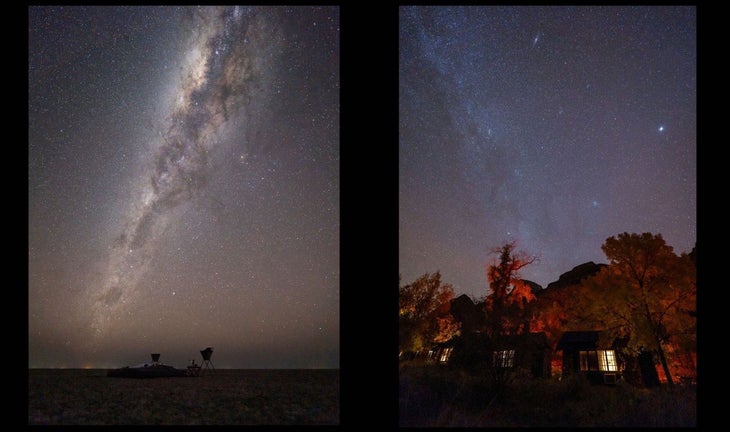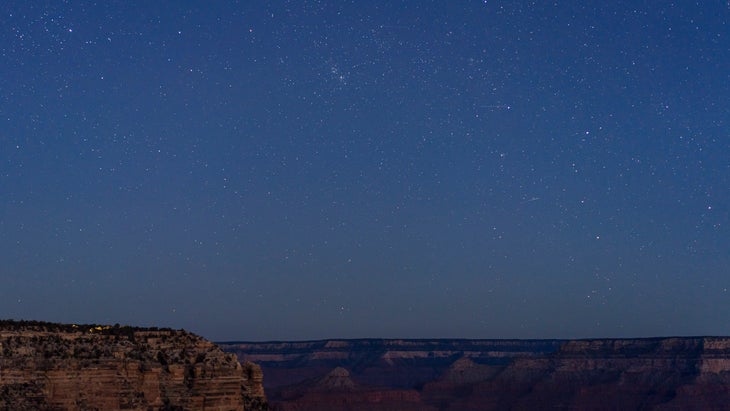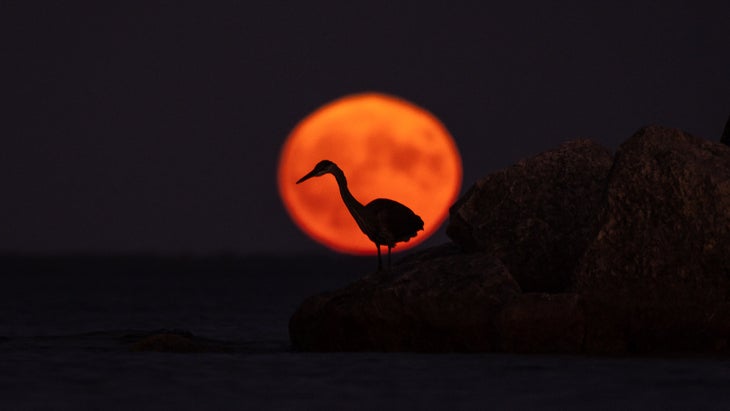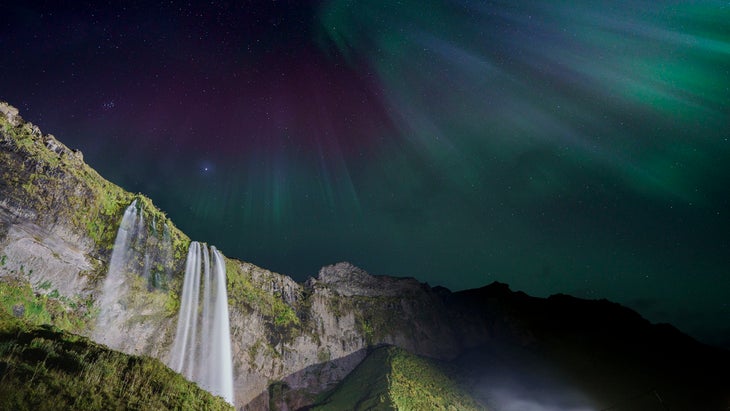9 Brilliant Astronomy Events to Be Sure to See This Year
From supermoons to a total eclipse to the national park’s biggest and best-attended star parties, these are the must-see celestial shows of the year
New perk: Easily find new routes and hidden gems, upcoming running events, and more near you. Your weekly Local Running Newsletter has everything you need to lace up! .
Last year was a dream for astronomy enthusiasts like me, with brilliant low-latitude auroras, a total solar eclipse, and a bright comet that was easily visible to the naked eye. The good news is I’m just as excited for stargazing in 2025.
North America will enjoy an exceptional cadence of astronomical sights every season, starting with a buzzed-about planet parade on show now through late February, with a total lunar eclipse to follow in mid-March.
This is also a great year to be an aurora chaser. Now that the sun has entered solar maximum, we’ll enjoy heightened northern- and southern-lights activity. This phenomenon occurs roughly once every 11 years, and it could continue until at least this fall, and potentially into 2026. So now is the time to plan a trip to see the auroras; here are the destinations I recommend to do just that.
As an astrophotographer, I travel the world seeking dark skies free from light pollution, but I also love watching interstellar magic from my backyard in Cleveland, Ohio. This year, backyard astronomers across the U.S. can enjoy all kinds of night-sky events, most visible even through city lights.
Here are the astronomical sights and events I’m most excited about in 2025, with tips on where, when, and how to make the most of them.
February
Prime Milky Way Season Begins
Under dark skies, you can technically see the Milky Way all year long, but not all sightings are equally astounding. This month the view improves as the dynamic and photogenic galactic center of our spiral galaxy, known as the Milky Way core, reappears in the southeast at night.
Here’s why: Earth is located on a spiral arm of the Milky Way galaxy, roughly two-thirds from its center. Between November and late January, Earth’s orbit puts the sun between us and the Milky Way core. So instead of seeing its center, which is always found within the Sagittarius constellation, we only spot thin wisps of the galaxy’s outer fringes. It’s still a beautiful band of stars, but not the same. See below:

Come February, we’ve transited far enough around the sun to once again start seeing that luminous core, which consists of dense gas, stars, and dust. You can admire it a few hours before dawn this month; the farther south you are, the earlier it rises. The sight will only improve as the year goes on. Summer, when the galactic center is visible most of the night, is my favorite time to photograph it.
Tips and Tricks: Location is critical. You’ll need a dark sky and dim moon to fully appreciate the galactic center, which is apparent to the naked eye and especially dazzling in photographs. Give your eyes at least 20 minutes to adjust to the dark to see it best. And don’t travel too far north; the galactic center is only visible below 55 degrees latitude—roughly Edmonton, Canada. Dark-sky destinations farther south, like those in New Mexico, Texas, or Arizona, provide the best views in the contiguous U.S.
Extra! Extra!: Start your pre-dawn core-watching with some evening awe. Just after sunset in late February, stargazers can admire a planet parade, with all seven of our neighboring planetary bodies. Here’s how to watch this rare alignment.
March 13-14
Total Lunar Eclipse
If there’s one stargazing sight you absolutely should not miss this year, it’s the total lunar eclipse above North America. Overnight from March 13 to 14, Earth will slide between the sun and full moon, casting a shadow that dims the latter. The indirect sunlight will turn the moon a haunting tangerine hue, which is why it’s known as a blood moon.
Tips and Tricks: The entire event will occur over six hours, starting just before midnight Eastern Time on Thursday, March 13. But the full eclipse—when Earth’s shadow covers the entirety of the moon—will run from around 2:30 to 3:30 A.M. Eastern Time on Friday, March 14. (Exact timing depends on your viewing location; download a stargazing app to determine your local watch time.)
Lunar eclipses are not only visible to the naked eye; they’re observable from light-polluted cities. I watched last year’s partial lunar eclipse from my front porch in Cleveland and used to zoom in on the action.
Extra! Extra!: The moon may get all the attention this month, but keep an eye out for auroras, too. The northern lights are said to be especially powerful around the equinoxes, due to our planet’s tilt, and this year’s spring equinox happens on March 20. Here’s my step-by-step guide to catching auroras in the lower 48 states.
June 21–28
Grand Canyon Star Party
While you can spot many sights on this list from home, there’s nothing like admiring the cosmos with an expert. That’s why the —the National Park Service’s largest night-sky gathering—is on this list. The annual summer event, set in the DarkSky-certified Grand Canyon National Park, draws hundreds of astronomy enthusiasts and thousands of visitors for a week of laser-guided stargazing, astrophotography workshops, and telescope sessions to check out everything from Jupiter’s great red spot to star clusters and nebulae. Volunteers set up around 50 telescopes each night.
This year’s free festival will be spread across two locations: on the South Rim outside the visitor center, run in partnership with the Tucson Amateur Astronomy Association, and on the North Rim at the Grand Canyon Lodge’s porch, with the Saguaro Astronomy Club of Phoenix.

Tips and Tricks: The full festival schedule will be released in March—check the for the latest news—but it’s a good idea to book your stay at the Grand Canyon now, due to the event’s popularity, combined with the fact it’s held in the high season. And if you’re after a real red-rock treat—stargazing from the floor of the Grand Canyon—don’t miss my guide to snagging a reservation at the iconic Phantom Ranch.
Extra! Extra!: While the Grand Canyon hosts the Park Service’s largest night-sky bonanza, many other national parks also put on star parties throughout the year. Those to consider include the , in Utah, which runs from June 25 to 28; the , in Nevada, from September 18 to 20; and Theodore Roosevelt National Park’s , in North Dakota, from September 19 to 21.
August 12–13
Perseid Meteor Shower
The most popular and prolific meteor shower of the year, the Perseids, will peak the night of August 12, with some potential for interstellar fireworks early on the mornings of August 11 and 12, too. This powerful shower can produce up to 100 soaring meteors per hour at its peak, but sadly 2025 isn’t the best year for it—that night in particular, the moon is quite full (85 percent), so it’ll wash out all but the brightest of them. That said, don’t skip this year’s Perseids, but do optimize your viewing.
Tips and Tricks: Head to a DarkSky-certified park, or better yet, book a night at a stargazing retreat and plan to stay up late. The best viewing typically happens after midnight and into the wee hours of the morning. That’s when the meteor shower’s point of origin, located in the Perseus constellation, is at its highest point in the sky. Plus, the Perseids are known to generate bright and colorful fireballs, often vivid enough to shine through moonlight and light pollution.
Extra! Extra!: There’s plenty to admire while you await those shooting stars. Approximately three hours before sunrise on both August 12 and 13, bright Venus and Jupiter will appear close together above the eastern horizon, not far below Perseus. The moon and Saturn will also travel near each other the nights of August 11 and 12, rising in the east roughly two hours after sunset.
August 19–20
Fall Planet Parade
We’ll have a pause in planet parades after February 2025’s seven-planet gathering, but the fun returns mid-August—and I’ll have my camera ready for this one, because it promises to be quite photogenic. In the pre-dawn hours of both August 19 and 20, roughly an hour before sunrise, Mercury, Venus, and Jupiter will appear in a diagonal line above the east horizon, with the waning crescent moon just to their left.
This autumn planet parade will be particularly spectacular because elusive Mercury, often obscured due to its proximity to the sun, will be visible. (It’s at its farthest distance from the sun from August 19 to 20.) That means we’ll have almost an hour of solid planet-parade watching before dawn.
Tips and Tricks: Continue to follow the diagonal line up the sky, above the northeast horizon, to see Uranus near the Pleiades star cluster. While Uranus typically requires a telescope for viewing, you can spot around six of the Pleiades stars unaided as well. Saturn is also easily visible atop the southwest horizon. Neptune is beside the ringed planet, too, but you’ll need a telescope to spot it.
October 6
A Supermoon Trio Starts
In October, supermoon season will finally be upon us, and it kicks off a string of three consecutive, brighter than average full moons to close out the year. The first supermoon is the October 6 Hunter’s Moon, which will appear larger and more vivid than normal.
The full Beaver Moon on November 5 will be the largest of the year, and the Cold Moon on December 4 will be the last full supermoon until December 2026.
A full supermoon doesn’t differ all that much from your average full moon; it appears about 7 percent bigger and 15 percent more luminous, according to . The phenomenon occurs when the moon reaches its closest point to Earth during its full-moon stage.

Tips and Tricks: I like to photograph supermoons in the evening hours when they rise above the horizon just before sunset. That’s when something NASA calls the “” makes it appear larger on the horizon than it is when it’s higher in the sky. For photographers, objects on the horizon (like skyscrapers, animals, or trees) can also add scale to make the moon look exceptionally dramatic. Another great reason to watch a supermoon above the eastern horizon just before dusk: it turns a gold hue.
Extra! Extra!: Adding to the awe is Saturn, which rises just to the right of the moon on October 6. The November and December supermoons will rise above the northeast horizon before sunset, too.
October 9
The Moon Covers Pleiades
Here’s another marvel that even city dwellers can enjoy. On this night, the nearly full moon will cross in front of the Pleiades star cluster—one of the brightest objects we can see outside of our solar system, with around six stars visible to the naked eye.
Watching a bright moon slide in front of any distinguishable space sight is thrilling—and many U.S. stargazers learned this firsthand with last month’s . The U.S. won’t see the moon cover another planet until 2026, but this lunar occultation of Pleiades, a deep-space object known for its cobalt-blue stars, will put on quite the show, and you need not travel far to see it.
The Pleiades cluster boasts over 1,000 stars, and you can spot the brightest of them even amid light pollution. So get out and enjoy this event from right outside your door—no gear required. In fact, the Pleiades star cluster is one of my favorite sights when stargazing at home in Cleveland.
Tips and Tricks: During this event, the moon will begin to travel in front of the Pleiades stars around 11 P.M. Eastern Time, concealing several of the blueish flecks as the night goes on. The stars will reappear as the moon reaches the other side roughly three hours later. (Use a stargazing app to determine exact timing.)
You can catch the show in the northeast sky; those on the West Coast will need clear views to the horizon since it will happen soon after the moon rises.
November 7–9
Aurora Summit
The boom in northern lights will continue through much of 2025, and you can hone your auroral hunting, and learn more about those dreamy sky swirls, at the annual Aurora Summit, this year in Red Cliff, Wisconsin. Now in its eighth year, the festival brings together night-sky enthusiasts for a weekend of seminars, photography workshops and forecasting tutorials by day, and, of course, guided aurora chasing by night.
This gathering takes place in my favorite region in the contiguous U.S. for aurora hunting—the Great Lakes—with the picturesque backdrop of Lake Superior and the scenic Apostle Islands National Lakeshore. While star parties abound in the U.S., this is one of the nation’s only festivals dedicated entirely to the northern lights.

Tips and Tricks: Bookings open on the in June. Consider the pre-event’s astrophotography boot camp if you want to elevate your night-sky photgraphy skills.
December 13–14
Geminid Meteor Shower
If there’s one meteor shower you should witness in 2025, it’s the Geminids. Under pristine skies free of light pollution, this year-end spectacle can produce upward of 150 meteors per hour when it peaks overnight between December 13 and 14. The best viewing starts after 10 P.M. and continues through the night. The waning crescent moon won’t rise until 2 A.M. local time, so you’ll have several hours of prime meteor-shower watching sans moonlight.
Tips and Tricks: Stargazing from a DarkSky-certified destination will improve your viewing. And I recommend using a light-pollution map, like , to locate a nearby stargazing perch that’s spared from city lights. Look for a spot with clear views to the eastern sky, where the shower’s origin point, located near the Castor star in the Gemini constellation, rises. Bright Jupiter, located right within Gemini the night of December 13, can aid your viewing.
I’m a big fan of the Geminids, not just for the abundance of meteors but their striking beauty. These interstellar fireworks are vivid and speedy, and can come in all sorts of colors—notably white, yellow, and green—due to the remnants of metal. In December 2023, I even watched a bright-red Geminid streak through the sky above my house, creating a trail of shimmery scarlet as it traveled.
5 Ways to Enhance Your Stargazing Experiences
1. Download a Stargazing App
A night-sky app like ($20 for the Pro subscription, which I use) or (free) can do wonders for your stargazing. These apps use live night-sky simulations to help you navigate the heavens and locate both obvious space objects, like planets, as well as more obscure stars, galaxies, or star clusters.
2. Use Red Lights
It can take our eyes 20 to 30 minutes to adjust to the dark after exposure to bright white lights. Red lights, on the other hand, are much less disruptive. Use a —or cover your white light in red cellophane—to preserve your night vision in the field. I also use to turn my iPhone light red so I can still use it when needed.
3. Learn to Photograph with Your Smartphone
The cameras built into today’s smartphones are astounding, especially for astrophotography. If you’re interested in snapping pics of the night sky but don’t want to invest thousands of dollars in an astrophotography kit, learn to use your smartphone to take night photos. I wrote this guide to photographing the northern lights with your smartphone, and you can use many of the lessons in that piece to shoot the stars with your phone as well.
4. Visit Your Stargazing Perch by Day
If you’re stargazing in a new destination, stop by the site in the daytime so you’re familiar with the parking situation, any safety hazards, and the best place for sky-viewing. When hiking at night, remember to stick to the trail and follow Leave No Trace principles—pack out all that you bring in, let wildlife be, and don’t veer off the established route.
5. Stargaze with a Buddy—or Better Yet, a Guide
While I’ve spent many a night stargazing solo, I’m more at ease when I’m with a friend—and even more so with a local guide, especially if I’m in a new locale. If you’re heading out alone at night, tell someone where you’re going, and pack extra safety items, like a portable charger for your phone, a headlamp with spare batteries, and a satellite communicator for emergencies.

Stephanie Vermillion is ���ܳٲ������’s astrotourism columnist and author of National Geographic’s , which was published in December 2024. She’s planning her 2025 travels around many attractions on this list, from chasing the auroras in Yukon and Norway to photographing the Milky Way core in the Southwest. You can follow her adventures on .


